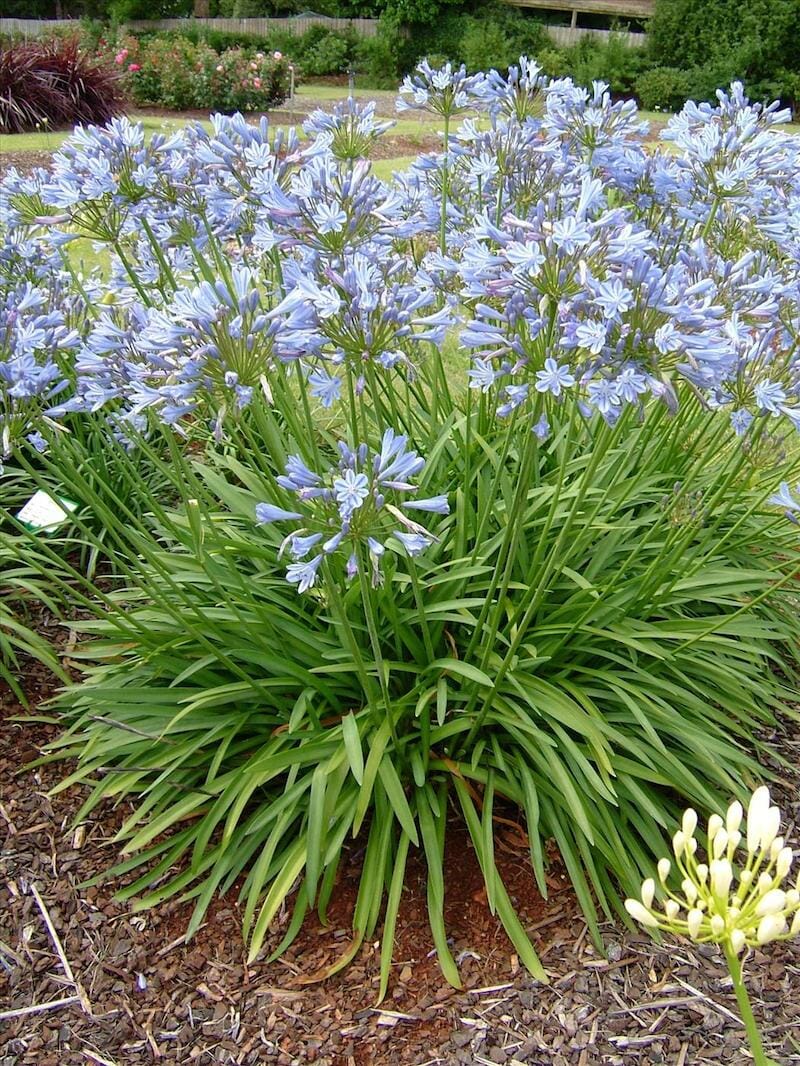Agapanthus Expanding Conditions: Dirt, Sunshine, and Watering
Agapanthus Expanding Conditions: Dirt, Sunshine, and Watering
Blog Article
Unleashing the Secret to Successful Agapanthus Cultivation: Tips and Tricks for a Flourishing Garden
In the realm of horticulture, growing agapanthus successfully requires a strategic strategy that includes different facets of plant treatment. By understanding the nuances of agapanthus farming, one can produce an environment where these plants thrive and grow abundantly.
Growing Agapanthus: Best Practices
When planting Agapanthus, proper dirt prep work is important for guaranteeing successful growth and growth of these stunning flowers. Agapanthus, typically referred to as Lily of the Nile or African lily, prospers in well-draining dirt with a somewhat acidic to neutral pH degree - Agapanthus. Before growing, it is crucial to change hefty clay soils with organic matter such as garden compost or peat moss to improve drainage and offer vital nutrients for the plants
To plant Agapanthus, pick a location that obtains complete sunlight to partial color, as this will promote healthy and balanced development and bountiful flowering. Dig a hole twice the size of the plant's origin ball and put the Agapanthus at the same depth it was formerly expanding. Gently backfill the opening with soil, pushing down strongly to remove any type of air pockets around the roots.
Water the newly planted Agapanthus extensively and continue to keep the soil uniformly damp, particularly throughout the plant's active expanding period. Agapanthus. Applying a balanced plant food once a month can better sustain the plant's growth and blooming. By adhering to these best practices for planting Agapanthus, you can produce a sensational screen of these fascinating blossoms in your garden
Ideal Dirt Issues for Agapanthus
For optimal growth and blooming success of Agapanthus plants, ensuring the dirt conditions are perfect is vital. Agapanthus prefers soil that is rich in nutrients, so incorporating a balanced fertilizer during the expanding season can promote healthy growth and vivid blossoms.

Watering and Feeding Tips
To make sure healthy and balanced development and dynamic flowers, proper watering and fertilizing strategies are vital for effective Agapanthus cultivation. Agapanthus plants gain from normal watering, especially during the expanding period. It is advised to water deeply once a week, making certain the soil is wet but not waterlogged. Throughout warm weather condition or in pots, even more frequent watering may be necessary to avoid the dirt from drying totally.
When it concerns feeding Agapanthus, a balanced fertilizer with equivalent components nitrogen, phosphorus, and potassium can be applied in the spring to promote healthy growth and blooming. Slow-release fertilizers are suitable for providing nutrients gradually over a prolonged period. Avoid over-fertilizing, as this can cause extreme vegetation development at the expense of blossoms.
Furthermore, integrating organic matter like compost right into the dirt can boost nutrient levels and improve dirt structure, assisting in the overall health and wellness of the Agapanthus plants. By adhering to these watering and feeding suggestions, gardeners can ensure their Agapanthus plants thrive and generate spectacular screens of blossoms.
Pruning and Deadheading Strategies
Correct pruning and deadheading techniques play an essential function in maintaining the health and wellness and aesthetics of Agapanthus plants, complementing the necessary practices of watering and feeding for effective farming. Trimming Agapanthus entails removing spent flower heads, yellowing or dead fallen leaves, and overall shaping of the plant to promote far better development. Deadheading, the procedure of getting rid of faded blossoms, not only enhances the plant's appearance yet additionally encourages more growing.
When deadheading Agapanthus, it is recommended to trim off the blossom stem at the base making use of sharp, tidy shears. This process redirects the plant's energy from seed production back into root and foliage development, advertising a much healthier and much more durable plant. Normal deadheading can expand the blooming period of Agapanthus and avoid self-seeding, which can cause congestion.
In regards to trimming, Agapanthus generally gain from a light trim after flowering to tidy up the plant and encourage fresh growth. Cutting down the spent flower stems and removing why not check here any kind of dead or damaged vegetation aids keep the plant's vigor and total look. However, go to the website it is necessary to avoid cutting into the crown of the plant, as this can weaken its health.

Protecting Agapanthus From Vermins and Diseases
Applying effective bug and disease administration strategies is important to safeguarding the wellness and vitality of Agapanthus plants in cultivation. One usual pest that influences Agapanthus is the Agapanthus borer, a caterpillar that passages into the plant, triggering damage to the blossoms and leaves.
In enhancement to insects, Agapanthus are prone to diseases such as origin rot and fungal fallen leave areas. By staying cautious and resolving insect and condition concerns immediately, gardeners can assist their Agapanthus thrive and flourish.

Conclusion
To conclude, successful farming of agapanthus calls for appropriate growing strategies, optimal dirt conditions, adequate watering and fertilizing, regular pruning and deadheading, and defense from parasites and illness. By complying with these tips click reference and methods, garden enthusiasts can guarantee a growing yard filled up with lovely agapanthus blossoms. Agapanthus. Remember to keep consistent treatment and attention to detail to promote the wellness and longevity of these stunning plants
When planting Agapanthus, correct soil preparation is essential for making certain effective development and advancement of these beautiful flowers.Water the freshly grown Agapanthus extensively and continue to maintain the soil evenly damp, specifically throughout the plant's energetic growing period.For optimal development and flowering success of Agapanthus plants, ensuring the soil conditions are perfect is essential. When transplanting or planting Agapanthus, ensure the soil is well-prepared to provide the necessary structure for the plants to establish themselves efficiently. One usual pest that influences Agapanthus is the Agapanthus borer, a caterpillar that passages into the plant, creating damages to the leaves and blossoms.
Report this page